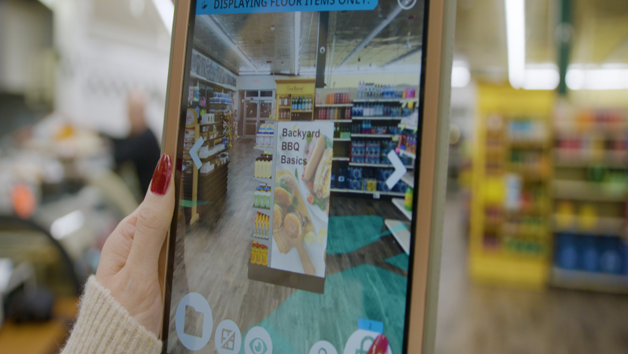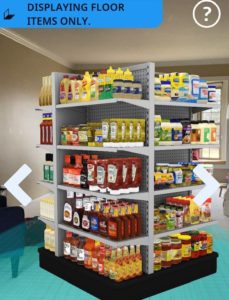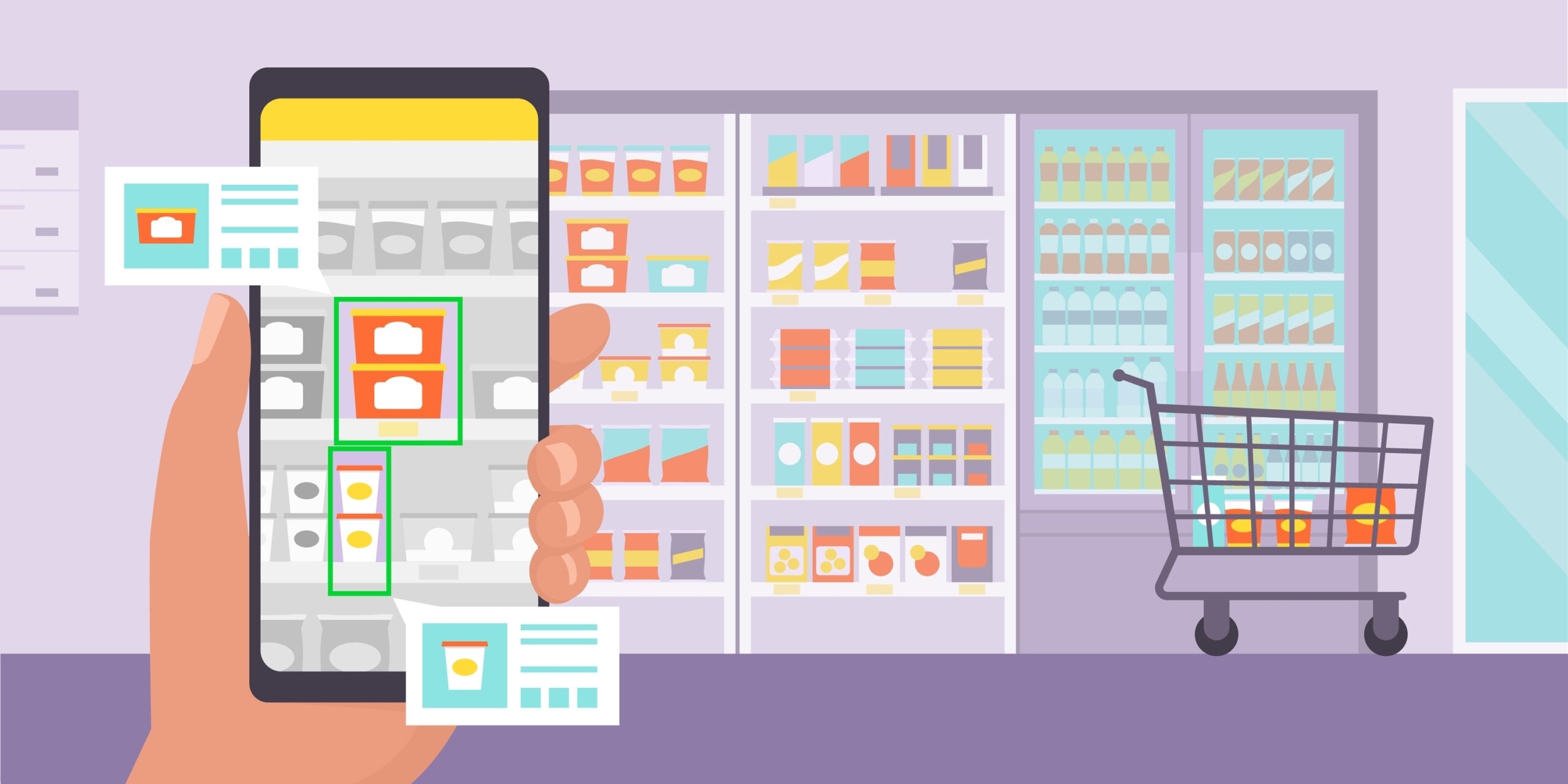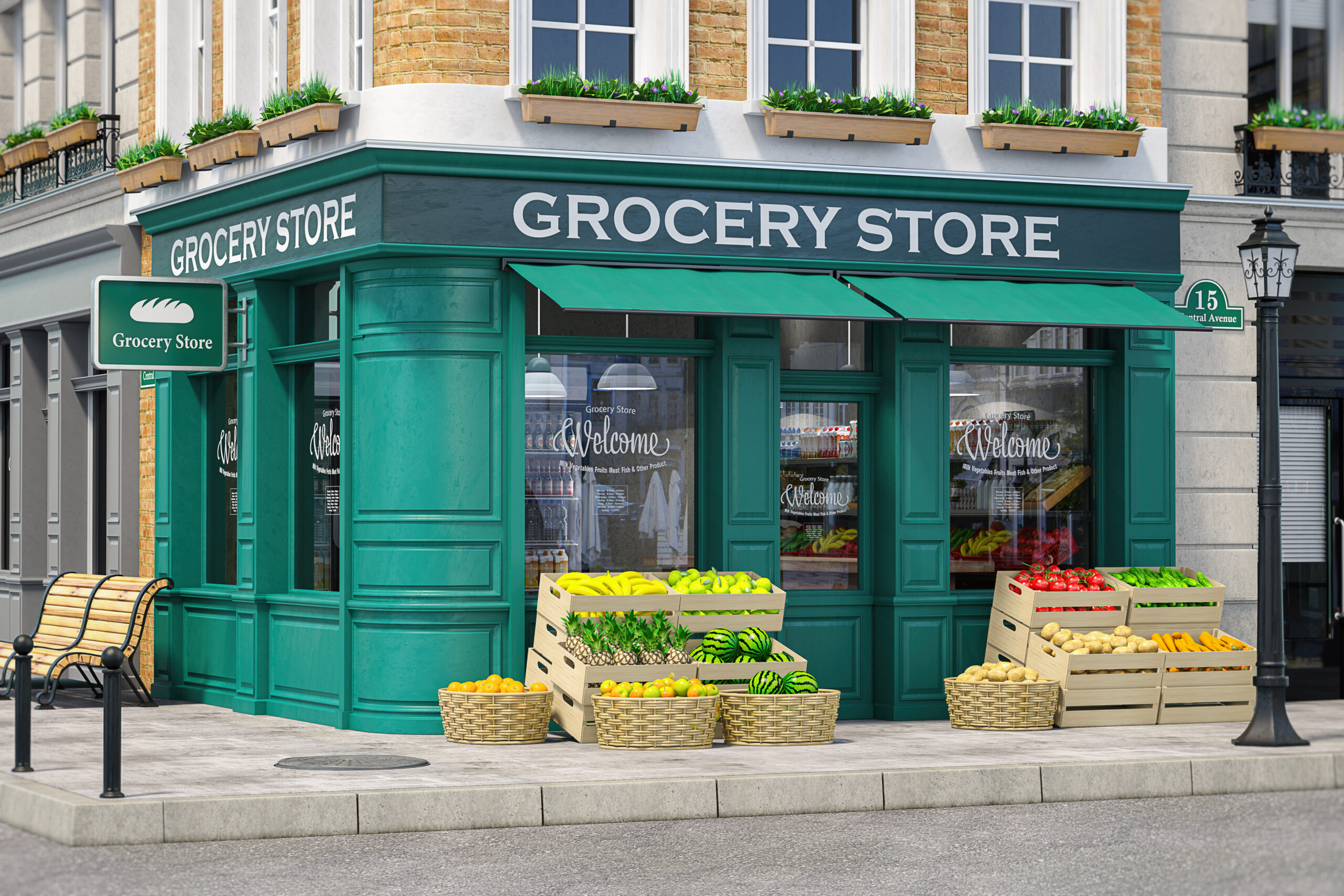As far as modern retail technologies go, augmented reality (AR) is about as user-friendly and accessible as it gets. If you’ve shopped online in the past few years for furniture, appliances, or other home goods, you’re probably familiar with AR. E-commerce sites like Wayfair, Target, Ikea and so many more often include the option to “see it in your room” or “view in AR,” giving shoppers the ability to place a 3D digital version of the product in their own space, viewed through a phone or tablet.
Among its many uses, AR has also been leveraged as a visual navigation tool, to assist surgeons in the operating room, to help architects visualize their projects, and for entertainment (think Pokemon Go.) Augmented reality is a game-changer in that it is readily available and only requires a mobile device, making it one of today’s most promising and innovative technologies. For retail and consumer packaged goods (CPG) brands, it has both consumer and business use-cases that are making it tech stack must-have. Keep reading to learn why the CPG industry should be paying close attention.
What is augmented reality?
Merriam-Webster defines AR as “An enhanced version of reality created by the use of technology to overlay digital information on an image of something being viewed through a device (such as a smartphone camera.)” The technology got its start in the 1960s with the first invention of head-mounted AR devices, but it wasn’t until 1990 that the term was coined by Boeing researcher Tom Caudell. Two years later, Louis Rosenburg, a researcher in the USAF Armstrong’s Research Lab, created one of the first augmented reality systems, which was used to help train military personnel. One common use of AR that many people don’t even think about today is the NFL’s yellow first-down line, which debuted in 1998. It would be difficult for any football fan to imagine watching a game without the technology today.
Augmented reality really started to gain steam into the early- and mid-2000’s, when Pokemon Go had gamers walking around open fields, Google unveiled its first Google Glass devices in 2014, and social media filters, pioneered by Snapchat, took over everyone’s feeds.
Then, in 2017, Ikea debuted the IKEA Place app and kicked off online shopping revolution that is only getting more innovative and ubiquitous time goes on.
The many uses for AR in Retail & CPG
Let’s look at a multiple ways augmented reality plays a role in today’s retail landscape:
Product visualization
After IKEA launched IKEA Place, the race was on for retailers, brands and anyone in the consumer goods industry to get on the AR train. The hugely popular Swedish home goods store created a way for shoppers to download a mobile app and view large products, like furniture, in their own homes. Online shoppers didn’t need to worry if a large item, like a couch, wouldn’t fit in their space or match the decor—with AR they could first look at it in the room and get a feel for whether it is worth the investment.
Trying on clothes and beauty products
Most of us understand the frustration of buying items online only to have to ship them back or find a store to return them to when they don’t fit or weren’t the right color or style. AR is trying to solve that common drawback to online shopping. For example, beauty retailer Sephora has been using AR for years to allow shoppers to scan their faces and “try on” makeup through their mobile app. More recently, Walmart rolled out a new app feature that allows shoppers to upload images of themselves, and then overlays clothing using machine learning and augmented reality for a personalized, realistic look of how the item will look. These types of augmented experiences help shoppers make more informed decisions, and lead to less returns.
Viewing additional product information
In the CPG space, AR isn’t just an online benefit. For in-store shoppers, augmented reality technology can be used while shopping to learn more about a product. Brands can leverage AR apps to allow shoppers to scan a product to get recipe ideas, more detailed nutrition information, or learn more about from where their ingredients originated.
Marketing
Similarly, brands can leverage AR for a more interactive and engaging way to market their products at the shelf. By using an AR app to scan a product, shoppers might be able to see a pop video or animated graphics right in front of them, or hear a voiceover tell them about recent promotions.
Wayfinding
Many times, grocery shoppers aren’t sure where to find an aisle or product, which makes in-store shopping frustrating. Retailers can look to AR as a solution, by adding an augmented wayfinding feature to their store app. Shoppers can pull up their phones and be guided through the store using an overlaid map or compass that can point the way to a specific area or product.
Field execution
From a business standpoint, sales reps are often challenged when communicating their brands in-store concepts to multiple retailers in a short amount of time. They are tasked with gaining buy-in while also trying to capture retail space from competitors. To do so, they often are armed only with still images of their displays, endcaps or brand concepts as visuals to communicate why the retailer should approve. Not an easy task.
Augmented reality, like InContext’s SMX GO field execution app, is arming sales teams with an impactful mobile tool that digitally overlays points of interruption directly in the retail space. This gives them not only the convenience of a mobile app, but allows them to show how a display, for example, will fit within the space, and how it will look in a particular store. Leveraging technology like SMX GO leads to better conversion rates, faster sales cycles, and improved collaboration with retail partners.
For those CPG brands and retailers who haven’t yet tried AR or considered how an AR solution might benefit both their shoppers and their sales teams and partners, the time is now to get on board with this simple, engaging and powerful mobile tool.
Learn more about AR retail execution tools from InContext
Interested in learning more about AR or want to demo our app, SMX GO for yourself? Contact us to set up a time to chat!





